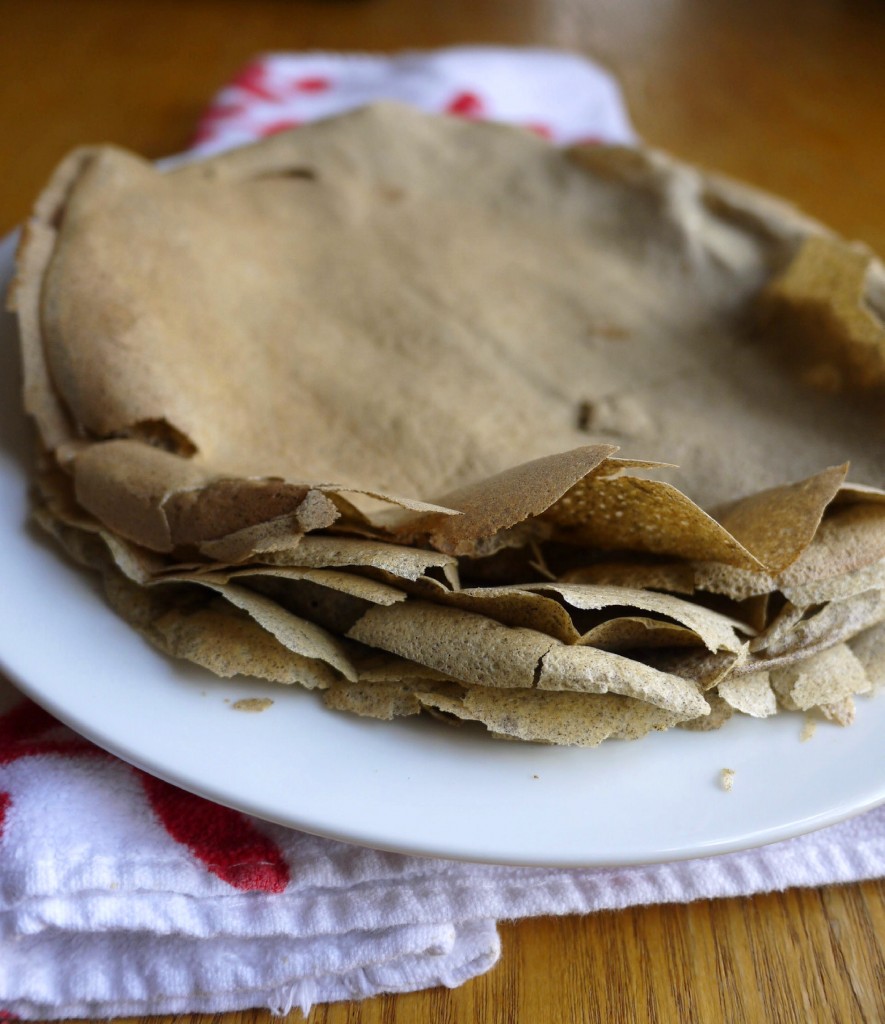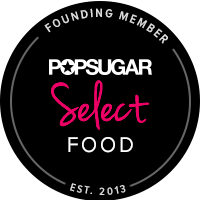I love crepes. I really, really love crepes. In a scary way. When I was living in Paris, I could have subsisted entirely on crepes. Unfortunately, back in the States, it’s hard to find a really good crepe. They’re getting better, but most crepes I’ve had here lack that certain je ne said quoi. Maybe, like New York bagels, it’s the water.
You’d think because I missed crepes so badly, I would spend my days and nights experimenting until I learned how to recreate the perfect Parisian crepe. Not so. For some reason, I didn’t think crepes were possible without the huge round cooking surface and that crazy tool the talented crepe-makers use to spread out the delectable batter. Crepes were other worldly to me. Not a dish I could just throw together without the proper training and tools. Until the day I did. Throw it together, I mean. All I had in my arensal were a spatula and a large skillet, but I quickly discovered that’s all I needed. Well, that and quick reflexes to tilt the skillet to spread the batter as soon as it hits the surface.
You know what I learned? Crepes aren’t difficult or other worldly. In fact, they are ridiculously quick and easy to make. Do my crepes have the je ne sais quoi of the French crepes? Not quite. But, they’ll do for now. In fact, they will do for breakfast, lunch, and dinner…. 🙂
Healthy Recipe Ecstasy: Yes! These aren’t any old crepes. They are gluten-free and dairy-free buckwheat crepes. Usually, crepes are made with flour, eggs and milk. In France, they often mix all-purpose flour and buckwheat flour to make the crepes. My first crepe-cooking endeavor coincided with a gluten-free lunch guest so I decided to use just buckwheat flour, and, while I was at it, substitute soy milk for regular milk. The result is a darker-looking crepe with a slightly nuttier flavor that everyone can enjoy.
- 4 large eggs
- 1 cup soy milk
- 1/2 cup [url href=”http://www.amazon.com/gp/product/B00DDJ7MYW”]buckwheat flour[/url]
- Generous pinch of kosher salt
- 2 tablespoons olive oil
- Whisk the soy milk and eggs together in a medium bowl. Gradually whisk in the flour.
- Slowly heat a large skillet until it’s on medium high heat. To heat the skillet slowly, I start on low heat for a minute and then turn it up to medium low for another minute and then medium high for another minute and so on.
- Add the olive oil and swirl it around to cover the bottom of the skillet. Once the oil is hot, lift the skillet up off the heat and slowly pour in 1/2 cup of the crepe batter. Depending on the size of your skillet you made need a little more or a little less. Turn the skillet from side to side as you pour in the batter to spread it out until it covers the entire bottom surface. This is where the quick wrist action comes into play.
- Once the batter covers the entire bottom of the skillet in a nice round circle, let it cook for 30 seconds to a minute, until the edges start to curl up. Please note that my first crepe always comes out terrible and then my second is more even like the one below. So don’t get discouraged if it doesn’t look great your first time!
- Run a metal spatula under all the edges of the crepe. Flip the crepe. Cook for 30 more seconds then turn the crepe out onto a cutting board, baking sheet or plate and add your toppings.
- That’s it! It’s almost sad how easy this was. Although, as you can see, my edges need a little work. They got a little too crispy and start breaking off. This is where the je ne said quoi and the French crepe magician come in. Or maybe I just need more practice….



Thanks!!! FINALLY a simple buckwheat crepe recipe that does indeed work and taste great. Still looking for one without eggs to be just as simple, but this will be great for now. Had them last night and they were delicious. light dollop of yogurt, quatro formagi, black pepper, ham, and thin slices of tomato – filled!
I’m glad you liked it! Your crepe filling sounds great. 🙂
isnt egg considered dairy though…?
Hi! Thanks for the comment. No, egg is not actually a dairy product. Rather, it’s an animal byproduct. Dairy refers to the product of the mammary glands of mammals such as cows, goats, sheep, and the products derived thereof. Basically milk or anything made from milk. Somehow eggs often get incorrectly lumped in with dairy – maybe because they usually sit next to milk in the grocery store. 🙂 Here’s some more information on dairy products: http://www.healthyrecipeecstasy.com/dietary-constraints/lactose-intolerancedairy-free/, http://dairyfreecooking.about.com/od/dairyfreebasics/f/eggsdairy.htm, http://www.godairyfree.org/ask-alisa/are-eggs-dairy